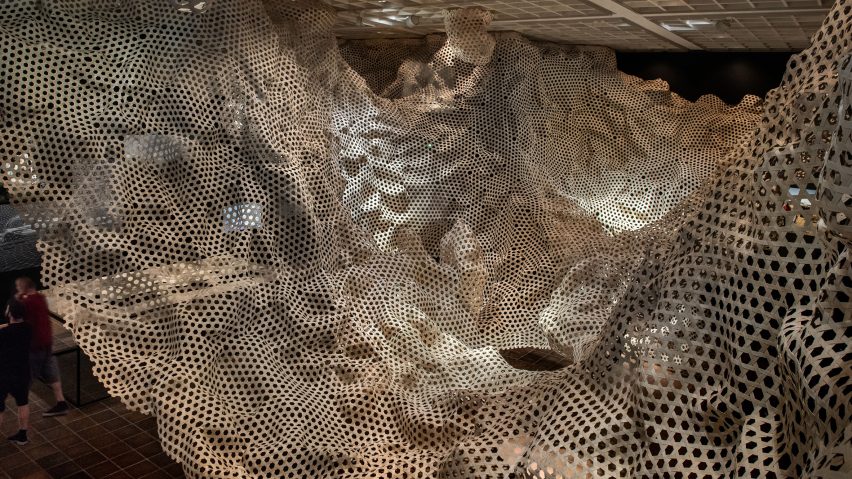
Cave Bureau recreates Kenya's volcanic caves for The Anthropocene Museum exhibition
Kenyan architectural studio Cave Bureau has examined issues surrounding decolonialisation and decarbonisation by spotlighting the history and architecture of Kenya's volcanic caves.
The Anthropocene Museum exhibition, which is on show at the Louisiana Museum of Modern Art in Denmark, features a number of Cave Bureau's projects that use natural architecture to highlight cultural and environmental issues.
As part of its research process, the studio 3D-scanned the insides of Kenya's million-year-old caves before translating the structures into installations and architectural projects.
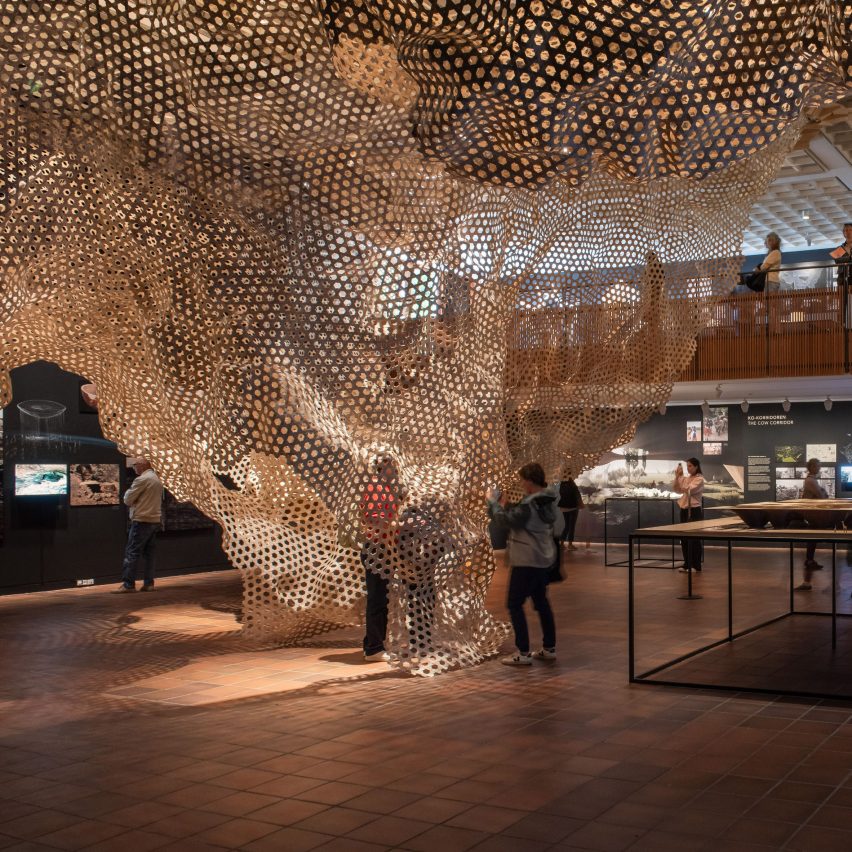
Among the installations in the exhibition is a recreation of the Shimoni caves by the Indian Ocean, which were historically used as a waiting pen for captured slaves.
Cave Bureau's design of the caves was made from lightweight mesh.
The project, made in collaboration with the Centre for Information Technology and Architecture at the Royal Danish Academy, was informed by pre-colonial building techniques and was handwoven at the museum.
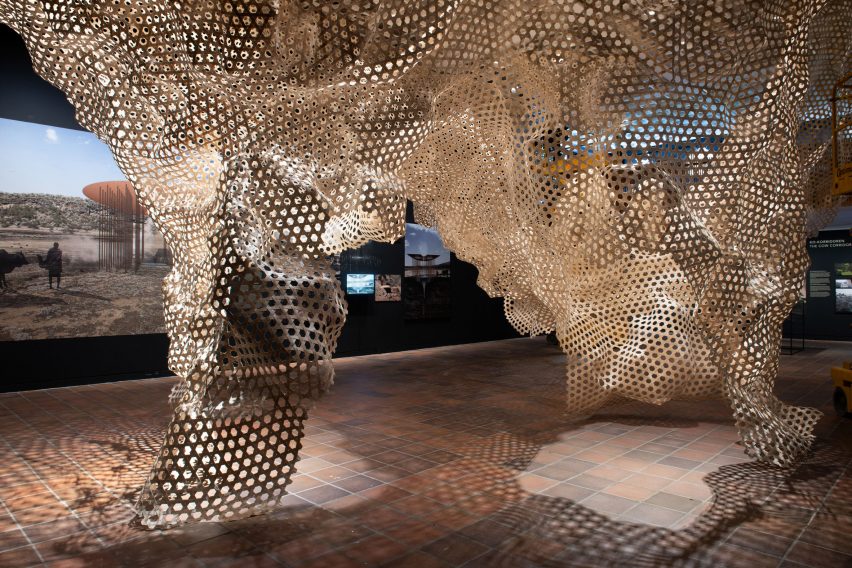
This process of scanning and translating caves' structures is part of Cave Bureau's overarching vision of exploring the relationship between nature and architecture.
The exhibition highlights how caves have been used as a shelter for refugees escaping slavery and oppression.
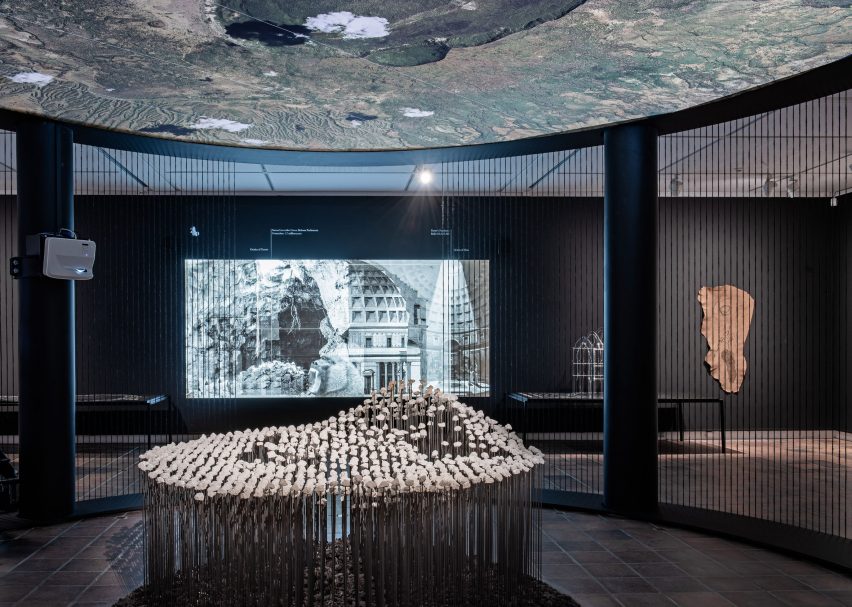
It also looks at how geothermal energy extraction – which has a role in the global green energy movement – can have a negative impact on nature, animals and local communities.
The Maasai, an indigenous African community, is one of the communities affected by geothermal energy extraction, according to Cave Bureau.
"The green revolution is legitimised by its positive global narrative," said the Louisiana Museum of Art.
"This makes the struggle for indigenous culture difficult, even though these groups may very well be the people who are living most sustainably and consuming the lowest amount of CO2."
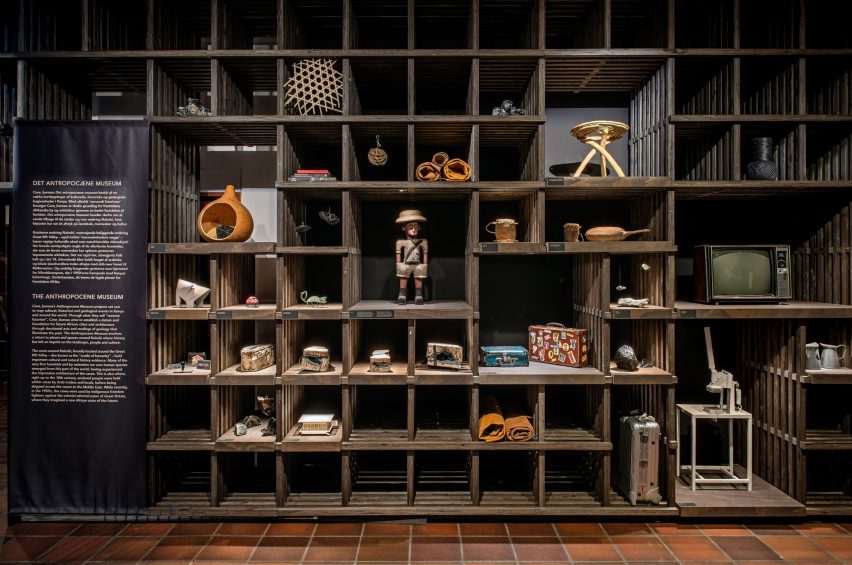
The exhibition also showcases what Cave Bureau's founders Kabage Karanja and Stella Mutegi call "reversed futurism", which combines contemporary architecture with indigenous knowledge to create sustainable solutions for the future.
An example is the studio's Cow Corridor project, which aims to establish the Maasai's grazing routes through Nairobi, "which has been forbidden territory for cows since the British partition of the country", said the museum.
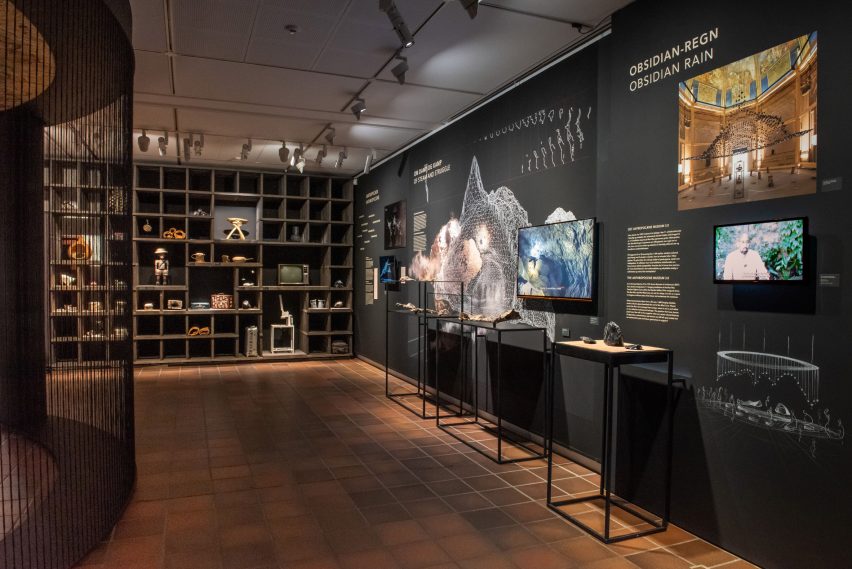
Also featured as part of the exhibition is The Door of No Return – a version of the gate that enslaved West Africans passed under before being shipped to the Danish West Indies.
Here, Cave Bureau has increased the gate's size and transformed it into an installation featuring limestone stalactites.
"By using critical architectural acts and propositions of resistance we address past traumas to generate projects of healing that are inclusive for all life on earth to thrive," said Karanja and Mutegi.
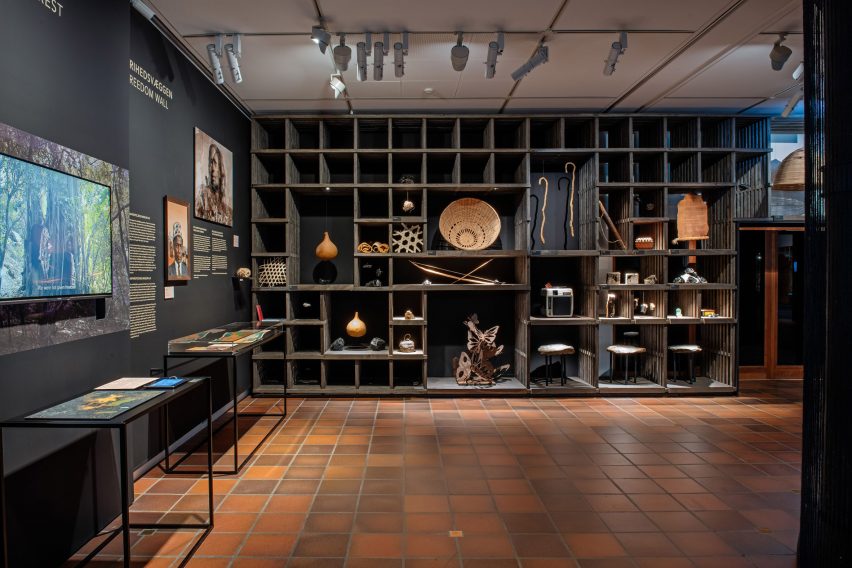
Cave Bureau's exhibition at Louisiana Museum of Modern Art is the sixth and final exhibition of The Architect's Studio series taking place at the museum.
The first exhibition of The Architect's Studio series opened in 2017 and focused on Amateur Architecture Studio in China, which is led by architects Wang Shu and Lu Wenyu.
Other exhibitions included the work of Chilean architect Alejandro Aravena and the Elemental studio; projects by Mexican architect Tatiana Bilbao, and Indian architect Anupama Kundoo.
The Anthropocene Museum exhibition is on display at Louisiana from 29 June to 26 November 2023. See Dezeen Events Guide for an up-to-date list of architecture and design events taking place around the world.